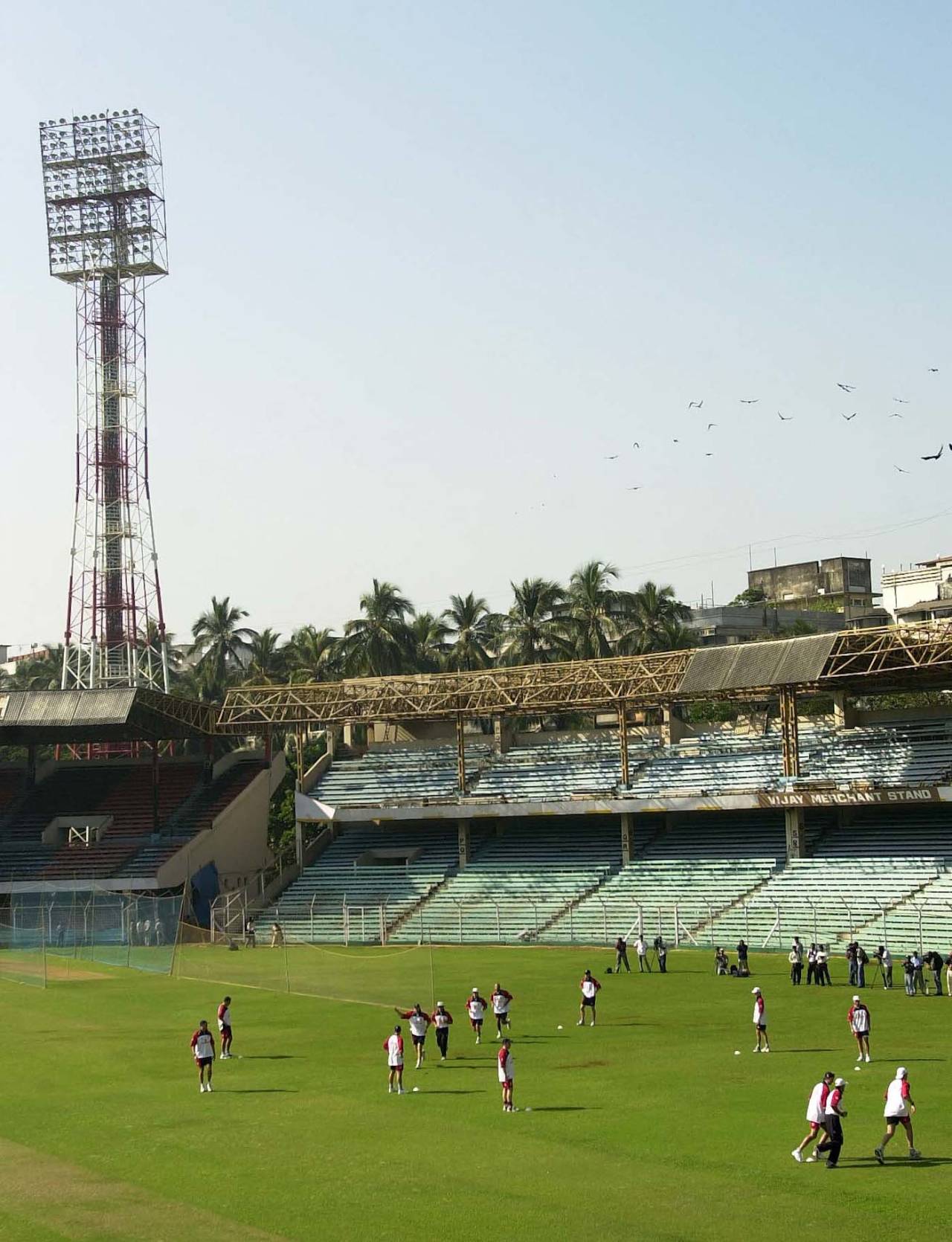Where Indian cricket was born
The maidans of the commercial capital have been the cradle of the game in the country
31-Oct-2010

The Wankhede, circa 2001 • Getty Images
Mumbai is the heart and soul of Indian cricket. The game took root with a vengeance in India's financial capital in the late 1800s and the city has gone on to produce more Test cricketers than any other city or state in the country.
And what cricketers they have been too. Among them are Vijay Merchant, whose first-class average of 71 is second only to Bradman's immortal 99.94; Sunil Gavaskar, whose feats against the West Indies fast bowling battery in the 1970s and 1980 are unparalleled; and Sachin Tendulkar, arguably the best batsman of the modern age.
The hallmark of Mumbai cricket is the maidan. A visitor to any one of these open, often oval-shaped, grounds that dot the city will find multiple cricket matches being played at the same time, with one match's fine leg being another's third slip. It is on such grounds, Shivaji Park, that the likes of Gavaskar and Tendulkar first learnt their trade.
Apart from the Wankhede Stadium, Mumbai is also home to two other grounds that have hosted Test cricket. The Bombay Gymkhana welcomed England in 1933-34, and the Cricket Club of India's Brabourne Stadium was once meant to be India's answer to Lord's. The new DY Patil Stadium in Navi Mumbai has hosted two IPL finals.
The venue
The Wankhede Stadium was born out of a dispute between the Cricket Club of India and the Bombay Cricket Association, which wound up building the new ground less than a mile away from the CCI's Brabourne Stadium in 1974.
The Wankhede Stadium was born out of a dispute between the Cricket Club of India and the Bombay Cricket Association, which wound up building the new ground less than a mile away from the CCI's Brabourne Stadium in 1974.
The stadium has been completely refurbished to make it more comfortable for spectators. Bucket seats have replaced benches, the roof has been raised, entrances and exits have been added, and nicer toilets built. The result is a capacity of 39,000 instead of 45,000, but the payoff is supposedly a much better cricket-viewing experience.
The seaside location of the ground has meant a fair amount of help for swing bowlers early in the day. The pitch typically provides help to spinners over the last couple of days of first-class games, but can also be full of runs, making it one of the more competitive surfaces in the country.
Great matches
India v England, World Cup, 1987
The end of a dream. Graham Gooch swept India aside to crush the subcontinent's hopes of an India-Pakistan final. It was also Sunil Gavaskar's last match in an India shirt. He was out for 4.
India v England, World Cup, 1987
The end of a dream. Graham Gooch swept India aside to crush the subcontinent's hopes of an India-Pakistan final. It was also Sunil Gavaskar's last match in an India shirt. He was out for 4.
India v Australia, 2007
In the last ODI played at the Wankhede before the renovations began for the 2011 World Cup, Murali Kartik ran through the Australians, taking 6 for 27, the best figures by a left-arm spinner in limited-overs cricket. He then added an unbeaten 21 with the bat as India squeaked home by two wickets.
In the last ODI played at the Wankhede before the renovations began for the 2011 World Cup, Murali Kartik ran through the Australians, taking 6 for 27, the best figures by a left-arm spinner in limited-overs cricket. He then added an unbeaten 21 with the bat as India squeaked home by two wickets.
India v Australia, World Cup, 1996
Mark Waugh and Sachin Tendulkar lit up the first floodlit international in Mumbai with some scintillating batting, with Waugh becoming the first man to score consecutive World Cup centuries.
Mark Waugh and Sachin Tendulkar lit up the first floodlit international in Mumbai with some scintillating batting, with Waugh becoming the first man to score consecutive World Cup centuries.
Major players
Vijay Merchant | Sachin Tendulkar | Sunil Gavaskar | Polly Umrigar | Farokh Engineer | Vinoo Mankad | Ajit Wadekar | Subhash Gupte
Vijay Merchant | Sachin Tendulkar | Sunil Gavaskar | Polly Umrigar | Farokh Engineer | Vinoo Mankad | Ajit Wadekar | Subhash Gupte
Top performers in ODIs
Most runs Sachin Tendulkar, 455 runs at 41.36 | Top score Sanath Jayasuriya, 151* v India
Most wickets Venkatesh Prasad, 15 wickets at 14.86 | Best bowling Murali Kartik, 6 for 27 v Australia
Most runs Sachin Tendulkar, 455 runs at 41.36 | Top score Sanath Jayasuriya, 151* v India
Most wickets Venkatesh Prasad, 15 wickets at 14.86 | Best bowling Murali Kartik, 6 for 27 v Australia
Home team
When it comes to India's top domestic first-class tournament, the Ranji Trophy, Mumbai has been more dominant than Tiger Woods. They have won the event a record 41 times, including 15 in a row from 1958-59 to 1972-73. To put their dominance into perspective, the next best is Karnataka with eight titles.
When it comes to India's top domestic first-class tournament, the Ranji Trophy, Mumbai has been more dominant than Tiger Woods. They have won the event a record 41 times, including 15 in a row from 1958-59 to 1972-73. To put their dominance into perspective, the next best is Karnataka with eight titles.
The city's IPL team, Mumbai Indians, have had considerable success of their own. Having reached the final in 2010, they won the title in 2013 and 2015.